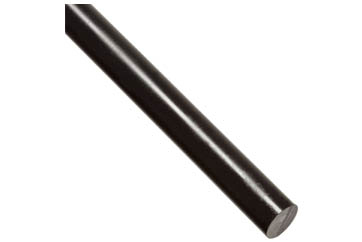Welcome To Mech Spares Private Limited
Polyphenylene Oxide (PPO)

Polyphenyleneoxide (PPO) is one of those high-performance polymers we like to call engineering thermoplastics. Its biggest strength is its resistance to high temperatures. It has a very high glass transition temperature, 210 oC. But there’s a price for being heat-resistant. Most polymers are processed at high temperature in a liquid-like state. But if your polymer won’t become liquid-like at reasonable temperatures, you can’t process it! For this reason, PPO is often made into blends with high-impact polystyrene (HIPS for short). Blending PPO with HIPS makes the PPO easier to process, plus it gives PPO some resilience. PPO needs this toughening because by itself PPO can be brittle in some situations.
| General Properties : | |
|---|---|
| Chemical Resistance | |
| Acids – concentrated | Fair |
| Acids – dilute | Good |
| Alcohols | Fair |
| Alkalis | Good |
| Aromatic hydrocarbons | Poor |
| Greases and Oils | Fair |
| Halogens | Poor |
| Ketones | Fair |
| Electrical Properties | |
| Dielectric constant @1MHz | 2.7 |
| Dielectric strength ( kV.mm-1) | 16 to 20 |
| Dissipation factor @ 1kHz | 0.004 |
| Surface resistivity ( Ohm/sq ) | 2×1016 |
| Volume resistivity ( Ohm.cm ) | 1017 |
| Mechanical Properties | |
| Abrasive resistance – ASTM D1044 ( mg/1000 cycles ) | 20 |
| Coefficient of friction | 0.35 |
| Elongation at break ( % ) | 50 |
| Hardness – Rockwell | M78/R115 |
| Izod impact strength ( J.m-1 ) | 200 |
| Poisson’s ratio | 0.38 |
| Tensile modulus ( GPa ) | 2.5 |
| Tensile strength ( MPa ) | 55-65 |
| Physical Properties | |
| Density ( g.cm-3 ) | 1.06 |
| Flammability | HB |
| Limiting oxygen index ( % ) | 20 |
| Resistance to Ultra-violet | Good |
| Water absorption – over 24 hours ( % ) | 0.1-0.5 |
| Physical Properties | |
| Coefficient of thermal expansion ( x10-6 K-1 ) | 60 |
| Heat-deflection temperature – 0.45MPa ( °C ) | 137 |
| Heat-deflection temperature – 1.8MPa ( °C ) | 125 |
| Lower working temperature ( °C ) | -40 |
| Thermal conductivity ( W.m-1.K-1 ) 0.22 @ | 23 |
| Upper working temperature ( °C ) | 80-120 |
Products
- Rotary & General Sealing
- O Rings
- V Rings
- Hydraulic Rod Seals
- Wiper Seal
- Hydraulic Others
- Pneumatic Seals
- Pneumatic Rod Seals
- Piston Seals
- Rubber Sheets
- Expansion Joints & Bellows
- Fabric Bellows
- Gaskets
- Rubber Plastic & PVC Caps
- Engineering Plastic
- General Products
- Custom Made Rubber
- PTFE Products
- Pu Products
- Diaphragms
Technical Data
© Mech Spares Pvt. Ltd. All rights reserved.
Website Design by EWEBAC


